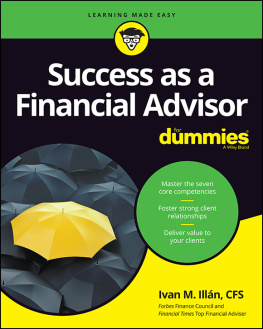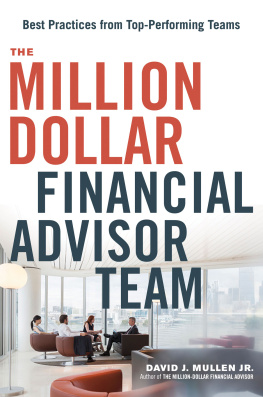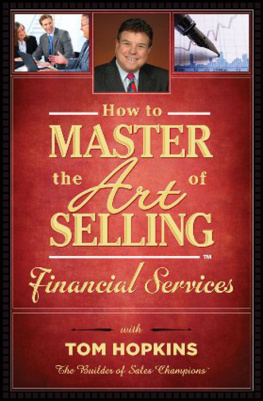A Final Thought
One of our favorite business books is The E-Myth Revisited by Michael E. Gerber. The E-Myth, or Entrepreneurial Myth, says that most new businesses are not started by entrepreneurs who set out to build a strong business but by technicians who enjoy the hands-on work themselves.
Because of that natural bias, most business owners focus on working in their business when really they should be working on their business. There is, however, a simple and effective way to offset the E-Myth tendency. Instead of looking at the business as a one-off operation, Gerber suggests the owner should consider the business to be a prototype for a large number of franchises that will be added at a later stage. By adopting that mindset, the business owner will not only participate in the business as a technician but will also act as a manager (putting systems in place and controls) and as an entrepreneur (having a vision of how the business can create sustainable added-value for all key stakeholders). A business that is built and managed by someone who combines the approach of the technician, the manager, and the entrepreneur will have a far greater chance of future success than one guided by someone thinking like a technician alone.
Afterword
The goal of this book was to describe the structure and organization you need to put yourself in a position to effectively and efficiently grow your business. Implemented well, the processes we have discussed will put you more in control of your practice and provide the retention, loyalty, and advocacy that will be the base for that growth.
As an experienced investment advisor and senior sales executive in the financial services industry for more than a quarter of a century, we want to add a few more points about becoming a top advisor.
Top advisors have confidence. Confidence can result from any number of thingsbranding, advertising, having an office and a great team, niche domination, and depth of your client relationships, for example. These things may or may not be unique. We believe the principles and processes discussed in this book will, however, add confidence so that you know you are delivering the right services at the right time to the right clients. Process removes the ad hoc nature of service delivery.
One legendary head of a brokerage firm used to say, If you dont toot your own horn, then someone is likely to clog it up. In other words, successful advisory teams not only identify what they are good at, they also do a great job of marketing their strengths. You need a quiet confidence knowing you are in a strong competitive position because you deliver significant value to your clients. Yet you are always aware that competitors are working on ways to acquire your clients, and this drives you to consistently and continuously improve your relationships and deliverables.
Successful advisory teams are built properly and built to grow. As Jim Collins says in Good to Great, successful teams have strong leaders who get the right people on the bus, the wrong people off the bus, and the right people in the right seats. And they stick with that disciplinefirst the people, then the direction. Getting the right people on the team and in the right roles is critical, and clients and prospects can sense this and appreciate the value.
Great advisory teams also possess a strong ability to relate to what clients and prospects want. As Tony Robbins has pointed out, top performers can highlight the pain and gain that makes humans human. Top teams realize that what clients want is to eliminate pain and increase gain. Pain can be felt not only in market declines but in poor services, lack of a plan, poor communication, high fees, and so on. Gains can also be viewed as trust, confidence, great communication, client loyalty programs, and financial planning, as well as making the most of your money.
Leo Pusateri notes that successful advisors can articulate their Value Proposition or Value Ladder. Top performers have a strong value conversation with their clients and prospects. Strong value trumps pricing and creates loyalty. The organization and structure as defined by the processes we have discussed create that value.
It may take a while to master all of these elements; however, a good initial goal is to be great at something. This will allow you to compete from a position of strength. The best are great at some aspect of the business. Jim Collins asks, Why try for greatness?... Theyre doing something they really care about, about which they have great passion.
We also asked ourselves, Who is likely to implement our approaches? There is an idea called the 20-60-20 Rule, which to us applies to people, businesses, and clients. The top 20 percent are strong performers. They do their jobs well, understand what is required of them, and have the skills to deliver. You know which employees and clients are the top 20 percent. Some advisors in the top 20 percent who want to be in the top 10 percent or better will employ these approaches because they have the passion to be great. Some advisors are in the middle 60 percent and are promising talents. They are pretty good at their jobs and do most of what they are supposed to do. Those who have a strong desire and interest to move from the middle 60 percent to the top 20 percent will also adopt the approaches that we have expounded.
Great sports team coaches like Mike Krzyzewski of Duke and Bill Belichick of the Patriots, among others, show how serious they are. They are students of the gamethey are process-oriented, lead by example, set standards, and are creative and work hard, among many other qualities. What are your key traits? What traits would you like to further develop in order to build your resume of skills and your strategy to be great?
Strategy is about making wise choices and then having the courage and conviction to follow through and commit to turning words and ideas into action. This is the charge we leave you with.
Notes
Acknowledgments
, January 1, 2013.
. Steve Levinson, Ph.D., and Pete Greider, M.Ed., Following Through: A Revolutionary New Model for Finishing Whatever You Start (New York: Kensington Publishing, 1998).
Introduction
.
Chapter One
.
.
.
.
. Steve Levinson, Ph.D., and Peter Greider, M.Ed., Following Through: A Revolutionary New Model for Finishing Whatever You Start (New York: Kensington Publishing, 1998), 9.
. David Rock and Jeffrey Schwartz, The Neuroscience of Leadership, Strategy + Business 43 (Summer 2006).
. Bernstein quoted in Resource Planning Group.
.
. Ibid.
.
.
. Ibid.
. Ibid.
. Ibid.
.
.
. Kitces, Replacing the Data Gathering Meeting with a Get Organized Client Experience.
. Ibid.
. Also see Carl Richards, The Behavior Gap: Simple Ways to Stop Doing Dumb Things with Money (New York: Portfolio, 2012).
.
.
.
.
.
.
. Silverstein, The Law of Fractional Advantage.
. Ibid.
. Kenichi Ohmae, The Mind of the Strategist: Business Planning for Competitive Advantage.
.
.
.
.
.
.
.
.
.
.
. Kitces, Replacing the Data Gathering Meeting with a Get Organized Client Experience.
.
. Silverstein, The Law of Fractional Advantage.
Chapter 2
.
. Ibid.
. Pusateri Consulting and Training, Pricing Integrity, White Paper 1, Pusateri Pricing Your Value Unapologetically Series.
.
.
Chapter 3
.







